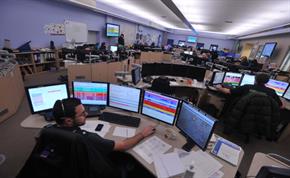
We are planning to move Bedford EOC to the new CLERIC CAD in the early hours of 18th November 2015. Bedfordshire and Hertfordshire will then continue to operate using CLERIC whilst the rest of the region continues on the Intergraph CAD until they also migrate in February 2016.
At the present time we do not believe that crews will see any disruption or change to the service they receive. However, as with any new system implementation, we have contingency plans in place and actions that need to be carried out on the night.
Please be patient and supportive of our EOC colleagues through the night, as this is a major change for them.
What needs to be completed before the ‘go live’ night?
A full operational plan has been put together for the week of the ‘go live’ which includes a command and control structure involving silver cells in all three localities and additional bronze support in all SLM areas. You may be asked to work amended shifts to support the migration.
The Trust has also decided to maximise operational cover regionally for the day shift leading up to the ‘go live’, the night shift of that migration and the 7 days following. Ambulance shifts which can’t be covered will be filled using Private Ambulance Service support.
All operational vehicles in all localities are required to carry current copies of map books for use if the mobile data is not functioning as normal during the migration. Maps have been ordered so that all vehicles can have these but managers will be asked to ensure these are in place before the go live shift and also at the start of the shift itself.
We will be making sure each locality has sufficient vehicles to cover for those off the road. This will be particularly important as they cannot be quickly moved onto the new CAD. Therefore, if Bedfordshire and Hertfordshire, for example, need to have a loan vehicle from another area it will not be seen on the CLERIC CAD.
What will happen on the ‘go live’ night?
The actual migration point is planned for around 0400hrs on the 18th November so the final preparations and switch-over will occur during the night shift commencing on 17th November. Additional resources will be on duty throughout the night shift, including Private Ambulance Service vehicles and additional managers. At midnight, Bedford EOC will begin passing call handling and dispatching for Bedfordshire and Hertfordshire to the other EOCs. Operational staff should not notice any significant difference as the regional Intergraph CAD will continue to be used, although operated by EOC staff at the other sites. There will be additional EOC staff on duty to support this transition.
By 0400hrs, it is planned that Bedford EOC will be ready to go ‘live’ on the new CAD. At that point, all Bedfordshire and Hertfordshire resources will be moved onto the new CAD.
What will operations staff and managers need to do?
At the start of the night shift all operational staff will be asked to confirm they have map books for their locality, a user guide for manual programming of the vehicle Satellite navigation system, pen and paper and a supply of paper Patient Care Records. Staff will also be asked to confirm that they are familiar with the processes for running without mobile data including the use of the above and the need to update EOC verbally by radio at each stage of each incident. DLOs will be asked to confirm these actions at the shift start. Silver cells will be running to support the migration process operationally.
Please consider EOC colleagues throughout the shift. This will be a challenging time for them all and we would appreciate your consideration and support. It may take a little longer than normal to respond to your requests and those you are working with in EOC may be less familiar with your area than usual.
You will be notified, at various points during the shift, when key changes are taking places using MDT and Airwave radios.
Locating addresses of calls
Should at any point we lose connectivity with the MDT, addresses can be input manually into the SatNav. Please see the ‘How to use the vehicle SatNav manually’ advice. As all vehicles will be supplied with map books for their locality, staff have the option to use those instead. Please ensure you are familiar with both before the migration period begins at around midnight.
PCRs
All operational vehicles will be provided with paper Patient care Records as a back-up in case connectivity to the CAD is lost during the migration to CLERIC.
What will be Different for Operational Staff Once CLERIC is Live?
At the present time we do not believe that crews will see any major disruption or change to the service or information they receive. However there will be a few changes as follows:
What to do if there’s a problem?
Operational staff should please contact the EOC or your DLO.
Thank you to the hard work of everyone involved in the CLERIC CAD implementation project.
Published 6th November, 2015